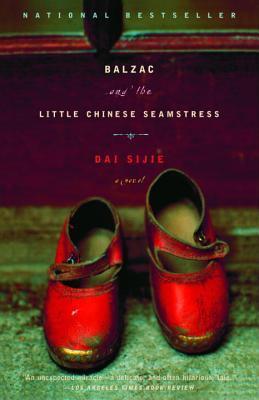Balzac and the Little Chinese Seamstress Book Summary
TL;DR
In "Balzac and the Little Chinese Seamstress," two boys exiled during China's Cultural Revolution discover banned Western literature, leading to romance and personal awakening in a remote mountain village.
What is Balzac and the Little Chinese Seamstress about
"Balzac and the Little Chinese Seamstress" is a semi-autobiographical novel by Dai Sijie that captures the transformative power of literature against the backdrop of China's Cultural Revolution. The story follows two young city boys, Luo and the unnamed narrator, who are sent to a rural mountain village for reeducation. In this isolated setting, they encounter the daughter of the local tailor, known simply as the Little Seamstress. Their discovery of a hidden collection of Western literary classics, translated into Chinese, opens their eyes to new ideas and perspectives. As they engage with the Seamstress through the lens of literature, they explore themes of love, knowledge, and the struggle against oppression, ultimately transforming their lives and her own.
Balzac and the Little Chinese Seamstress 5 Key Takeaways
Exile in the Mountain Village
Luo and the narrator are forced to leave their city lives and move to a rural village during China's Cultural Revolution, where they must adapt to harsh conditions and a new way of life.
Discovery of Western Literature
The boys stumble upon a hidden stash of Western classics, which they begin to read secretly, allowing them to escape their grim reality and expand their horizons.
Romantic Awakening
As Luo and the narrator fall in love with the Little Seamstress, their interactions with her become intertwined with the literature they read, leading to complex emotional developments.
Empowerment through Knowledge
Through the shared reading experience, the Little Seamstress gains insight into the world beyond her village, ultimately inspiring her to seek a different life.
The Seamstress's Departure
In a poignant conclusion, the Little Seamstress leaves her village and the boys without saying goodbye, symbolizing her newfound autonomy and the transformative power of knowledge.
Top Balzac and the Little Chinese Seamstress Quotes
- "Books are a form of freedom, and freedom is a form of love."
- "In that moment, we discovered the magic of literature and its ability to illuminate the darkness of our lives."
Who should read Balzac and the Little Chinese Seamstress?
This book is ideal for readers interested in the intersection of literature and personal growth, particularly those who appreciate stories of resilience and transformation in difficult circumstances. It offers insights into the power of knowledge and its ability to transcend cultural barriers.
Balzac and the Little Chinese Seamstress Best Reviews
- "A beautifully written novel that captures the profound impact of literature and the human spirit in the face of adversity." - The New York Times
- "Dai Sijie's tale is both a love story and a coming-of-age narrative wrapped in the rich tapestry of cultural history." - Publishers Weekly
People also liked these summaries
Balzac and the Little Chinese Seamstress FAQs
Is "Balzac and the Little Chinese Seamstress" a true story?
Yes, the novel is semi-autobiographical, as it reflects Dai Sijie's own experiences of being sent to live among peasants during the Cultural Revolution.
What happens to the Little Chinese Seamstress?
The Little Seamstress learns about the outside world through reading Western literature with Luo, ultimately leaving her village to start a new life in the city without saying goodbye.
What are the main themes in the book?
Key themes include the power of literature, friendship, coming of age, feminism, and the struggle for personal freedom against the backdrop of cultural oppression.
